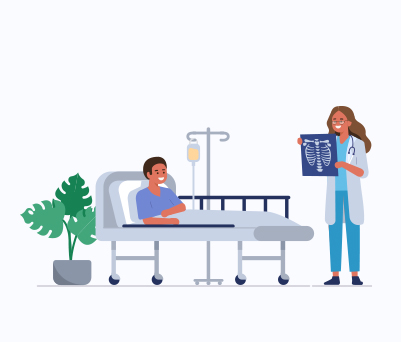Lower back pain can occur to anyone at any time in their life. If you are suffering from dull aches, intense, sharp pain, or chronic pain, it is important to seek out a lower back doctor in New York City for care. Our team understands that you cannot afford to not be on your feet or sitting at your desk at work, but these are just some of the most common instances that can cause you to develop strains and sprains in this area of the back. Others suffer from ligament and muscle strains as a result of vigorous activity or sudden accidents in which these muscles or ligaments are pushed to their limit. In all cases, you’ll benefit from seeing our back pain doctor.
When Should You See a NYC Doctor for Lower Back Pain?
Lower back pain ranges from very mild to very severe. If there is an instance in which the pain is so bad you cannot stand or walk or is too much for you to bear, seek out immediate medical care. In all other cases, our team is likely to want to see you right away. Even mild back pain can be a key indication of an underlying problem or a severe injury that needs proper care.
Perhaps you were hurt at work. You may have picked up something that was really heavy. Or, you may have a condition that’s been developing over time due to the chronic and repetitive motion you do within a sport, at work, or even at home. These are some of the most common instances in which people don’t take the step to call a back pain doctor soon enough. By talking to our team today, you’ll be able to see significant improvement in your quality of life. And, we’ll be able to help you potentially minimize the risk that your pain will worsen and lead to long-lasting problems for you. Work with our NYC back doctor today to find out what is causing your pain and what can be done to resolve it for you.
Low back sprains and strains are common causes of lumbar pain. A sprain or strain occurs when a ligament or muscle fails to withstand a force. Sometimes lumbar sprains and strains are calledhyperflexion and hyperextension disorders. Excessive motion in any direction can cause ligament, tendon or muscle fibers to stretch beyond normal.
- Sprains affect ligaments, tendons.
- Strains affect muscles.
- Hyperflexion – excessive forward motion
- Hyperextension – excessive backward motion
What can cause low back sprain or strain?
- Unexpected physical demands
- Lifting or carrying something heavy
- Falling, slipping
- Repetitive movements
- Weak abdominal and back muscles
- Poor body mechanics
Typical symptoms
Pain varies between mild and severe. Other descriptive pain terms include throbbing, achy, sharp, or electric-like. Symptoms can mimic a different type of spinal disorder such as lumbar disc herniation. A sprain or strain can make it difficult and uncomfortable to sit, stand, lie down, or sleep. Movement often worsens pain and your back may feel stiff or swollen.
Diagnostic examination
The purpose of a diagnostic examination is to learn about your general health, lifestyle, past medical history, and current back problem. The information gathered during your exam is combined with imaging or other test results to confirm your diagnosis.
Questions our Doctors may ask include:
- When did your back pain start?
- Did a particular event precede back pain?
- Has your pain improved or worsened?
- Does low back pain radiate into another part of your body?
- On a scale of zero (no pain) to 10 (agony), what is your current pain level?
- Does pain affect your ability to work or perform ordinary activities of daily life?
- Do pain and symptoms disrupt your sleep?
- Other questions specifically related to you and your symptoms.
MRI is performed to evaluate your lumbar spine. Sometimes a plain x-ray is ordered.
Sprain and strain treatment
Rarely is surgery needed to treat a lumbar sprain or strain!
Non-surgical interventional treatment often includes medications to reduce pain and muscle spasm. Interventional means to ‘intervene’ to stop and manage pain while you heal. Short-term use of a pain reliever and muscle relaxant may help you benefit sooner and more fully from physical therapy.
There are two types of physical therapy: (1) passive and (2) active.
- Ice, heat, ultrasound, massage, and electrical stimulation are typical passive therapies.
- Active physical therapy incorporates stretching and strengthening movements—according to your ability with a home exercise program.
- Passive and active therapies help increase circulation and speeds healing.
During physical therapy, you learn about proper posture, ergonomics, and body mechanics to protect your back whether you are at rest or during activity.
Acupuncture is an alternative non-operative and drug-free treatment our staff may recommend.
Tips to prevent back sprain, strain and pain:
- Don’t smoke.
- Eat healthy foods.
- If overweight, consider weight loss to reduce the load your low back handles.
- Keep your core muscles strong and flexible; exercise regularly.
When to see a spine specialist
Many back pain episodes are not serious and resolve with time. However, if your back pain is injury-related, acute, persistent, or worsens, call Rehabilitation Medicine Center of New York. We welcome your email or telephone call, and look forward to making your personal appointment.













